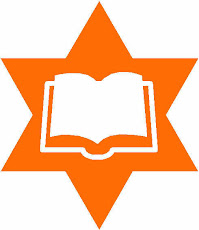One of the joys of Reconstructionist Judaism is the
encouragement to question our behavior, our patterns and our observances. Sometimes, that’s a challenge. “But we’ve always done it this way!” or “This is how your
grandparents did it, and this is how we do it.” Or “What do you mean, we can’t
do that?”
And yet, as Mordecai Kaplan emphasized – “The past has a
vote, not a veto.”
So if we don’t rely on tradition to decide which rituals we
observe and how we observe them, how do we decide what to do? Our practice is
guided by our values – explicit or implicit. Values such as tikkun olam/repair
of the world; dibuk chaverim/ cleaving to friends; gemilut chasadim/acts
of loving-kindness and t’zelem Eloheim/all are created in the image of
the Eternal. These are values that guide our community life and – I believe –
inform the home rituals we associate with the Holidays.
Many of the rituals for the holidays we celebrate at home –
Purim, Passover, Simchat Torah – involve celebrating with wine as a means of
expressing gratitude for being able to celebrate together. Another practice is celebrating a bar or bat
mitzvah with abundant toasts of congratulations and good wishes. And each week, we celebrate Shabbat with
candles, wine and challah.
The challenge is this:
for a person who is an alcoholic or for a family that contains an
alcoholic, little or no acknowledgement is given to the recognition that a
glass of wine is often toxic.
Sobriety is not easy, and struggling to remain sober
requires persistent diligence. It
doesn’t take much – sometimes just one drink - to begin the downward spiral
back into the depths of alcoholic behavior. And yet, how often when someone
declines a glass of wine, do we push them to have “just one”? How many times do
we question why they won’t have “just a little”? How many times do we have
options available that people can drink safely to use in celebrating with us?
Leviticus 19:14 tells us “You shall not insult the deaf, nor
place a stumbling block before the blind.” In other words, don’t set up a
situation in which it becomes more difficult for someone to participate.
A main focus of many communities lately has been
inclusion: how do we include those with
physical limitations? How do we include those who learn atypically? Who don’t
understand Hebrew? Who didn’t have a Judaically-knowledgeable background while
they were growing up?
We install ramps; provide large-print siddurim and assisted
hearing devices. Our siddurim include
both translations and transliterations – and many times, when we use Hebrew
orally, we also provide translations. We offer a variety of adult-ed classes,
along with numerous family education programs.
We encourage small communal groups within our larger communities so that
people can find others with whom they feel comfortable.
We carry inclusion a step further by providing vegetarian
options at our communal meals; by labeling ingredients present in dishes
served; by making our communities “peanut-free” zones.
And we can take it one step further by providing nonalcoholic
options.
We can decide not to press if someone says, “No thanks” to the
offer of a drink. Allow them to share what they want with us, when they want to
share it – not necessarily in front of a group of people.
We can also expand our reasoning for including non-alcoholic
options to the possibility that over-indulgence can result in impaired behavior
– driving, supervising young children, cooking, refusing to accept “no” when
someone establishes a boundary for themselves and many more behaviors.
Celebration does not depend on alcohol. Even without alcohol, we
can celebrate!
Routinely providing a variety of non-alcoholic options shows
the kavod/respect we have for different members of our communities. In
many cases, offering alternatives can be an expression of g’milut Hasidim/loving-kindness.
It can indicate an acceptance of individual differences. It can be a way of
making our communities and our ritual practices open to all.
How might our home rituals look without a focus on alcohol?
For Purim, we can focus on the story itself; on the generosity of
Mordechai to care for his younger cousin; on the arrogance of Haman; on the
courage of Esther; and on the willingness of Ahasuerus to listen to someone he
cared about…. And change his mind.
In the celebration of Passover, I would suggest that the focus
could appropriately directed at any one of the following:
- the definition of freedom
- standing up for what is right
- celebrating in the midst of transitions
- questioning the status quo
- remembering moments when one’s life changed dramatically
During Simchat Torah, we can share our favorite Torah stories or
lessons; ask participants to act out their favorite story; discuss other times
when we might celebrate and ending…. followed immediately by a beginning!
For Shabbat, we can focus on our much-needed break from
everyday-ness; on our gratitude for certain things we often take for granted
(food, shelter, clothing, friends, community); on the values and legacy we wish
to pass on to our children; on the stories our people have used to sustain us
throughout the generations; on good health; and on the ability to choose how we
will celebrate these things.
Using our values to determine our rituals can have a profound
effect on all participants. And a community which includes all will benefit
from the skills and talents of each individual.





